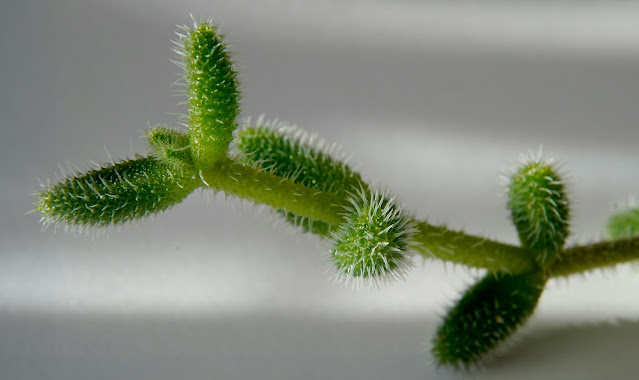11 Reasons Why Pigeon Peas Are a Must-Grow in Garden Every Year
Pigeon peas (Cajanus cajan) are a homesteader's dream crop. Not only are they a versatile and nutritious addition to your diet, but they also offer a range of benefits for your garden and livestock.
In this comprehensive guide, we'll cover everything you need to know about growing, harvesting, and using pigeon peas on your homestead.
Why Grow Pigeon Peas?
Homesteading often comes with the challenge of producing enough food to sustain your family.
Pigeon peas are a fantastic solution, offering a high-protein, calorie-rich crop that requires minimal space and maintenance. Here are some reasons why you should consider growing pigeon peas on your homestead:
- Nutritional Benefits: Pigeon peas are a nutritional powerhouse, packed with protein, fiber, and essential nutrients. They can be a valuable addition to a plant-based diet, providing a sustainable source of protein.
- Easy to Store: Once dried, pigeon peas can be stored for up to three years, making them an excellent pantry staple for your homestead.
- Easy to Prepare: Pigeon peas have a naturally delicious flavor, requiring minimal seasoning to make a tasty dish. They can be cooked in a variety of ways, adding versatility to your menu.
- Medicinal Uses: Pigeon peas have been used in traditional medicine for their various health benefits, including their ability to help lower blood sugar levels and reduce inflammation.
- Livestock Feed: Pigeon pea foliage can be used as a nutritious feed for livestock, providing an additional source of protein for your animals.
- Soil Improvement: Pigeon peas are nitrogen-fixing legumes, which means they can help improve soil fertility by converting atmospheric nitrogen into a form that plants can use.
- Wind Protection: Pigeon pea plants can grow tall and dense, making them an excellent windbreak for your garden or a protective barrier for more delicate plants.
- Attracts Pollinators: The cheerful yellow flowers of pigeon pea plants attract bees and other pollinators, which can benefit your entire garden.
- Drought Tolerant: Pigeon peas are well-suited to hot and dry conditions, making them a resilient crop for areas with limited water resources.
- Easy to Grow: Pigeon peas are relatively easy to grow, requiring minimal care once established. They are also pest and disease-resistant, reducing the need for chemical inputs.
- How to Grow Pigeon Peas
Choosing the Right Variety
Pigeon peas come in various varieties, including short-day and day-neutral types. Short-day varieties are ideal for areas with mild winters, as they bloom and produce pods during the winter months.
Day-neutral varieties, on the other hand, will bloom and produce pods once the plant matures, regardless of the day length.
Planting
- Location: Choose a sunny spot with well-drained soil for planting your pigeon peas. Avoid waterlogged areas, as they prefer dry conditions.
- Spacing: Plant pigeon peas about 3 to 4 feet apart to allow for their bushy growth habit. If you're planting them in rows, keep at least 4 feet between rows.
- Germination: To speed up germination, soak the seeds in warm water for up to 48 hours before planting.
- Sowing: Plant the seeds about 1 inch deep in the soil and water them well. Keep the soil moist until germination occurs, which may take several weeks.
- Mulching: Mulch around the plants to suppress weeds and retain moisture in the soil.
- Care and Maintenance
- Watering: Pigeon peas are relatively drought-tolerant but appreciate regular watering, especially during dry spells.
- Weeding: Keep the area around your pigeon pea plants weed-free to reduce competition for nutrients.
- Pruning: Prune back any dead or weak branches to encourage bushier growth and improve air circulation around the plants.
- Harvesting: Pigeon peas can be harvested when the pods are fully mature and dry. Simply twist the pods to remove them from the plant, then shell them to extract the peas.
- After Harvest
- Storage: Store dried pigeon peas in an airtight container in a cool, dark place for up to three years.
- Composting: After harvesting, you can compost the remaining plant material to return nutrients to the soil.
- Replanting: Save seeds from your best plants to replant in the next growing season, ensuring a continuous supply of pigeon peas for your homestead.
Using Pigeon Peas
Cooking
- Green Pods: Green pigeon pea pods can be cooked and eaten, but they are harder to shell. Boiling them briefly can make shelling easier.
- Dried Peas: Dried pigeon peas are more commonly used in cooking. They can be boiled and added to soups, stews, and curries, or cooked and served as a side dish.
- Pressure Cooking: Using a pressure cooker can speed up the cooking process and produce tender, flavorful pigeon peas.
Recipes
- Arroz Con Gandules: A traditional Puerto Rican dish made with rice, pigeon peas, and a variety of seasonings.
- Coconut Rice and Pigeon Peas: A Jamaican dish combining pigeon peas with rice, coconut milk, and spices for a creamy and flavorful meal.
- Pigeon Pea Salad: Cooked pigeon peas can be marinated in a vinaigrette and served as a cold salad.
Livestock Feed
- Foliage: The foliage of pigeon pea plants can be fed to livestock as a nutritious supplement, especially for dairy cows and goats.
Pigeon peas are a valuable addition to any homestead, offering a range of benefits from their nutritional value to their ability to improve soil fertility.
By growing pigeon peas, you can enhance your self-sufficiency and sustainability while enjoying a delicious and versatile crop. Start growing pigeon peas on your homestead today and reap the rewards for years to come.








Comments
Post a Comment